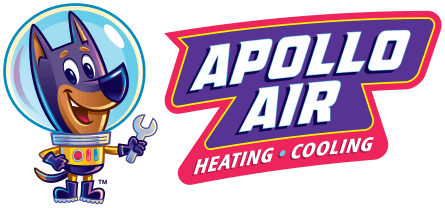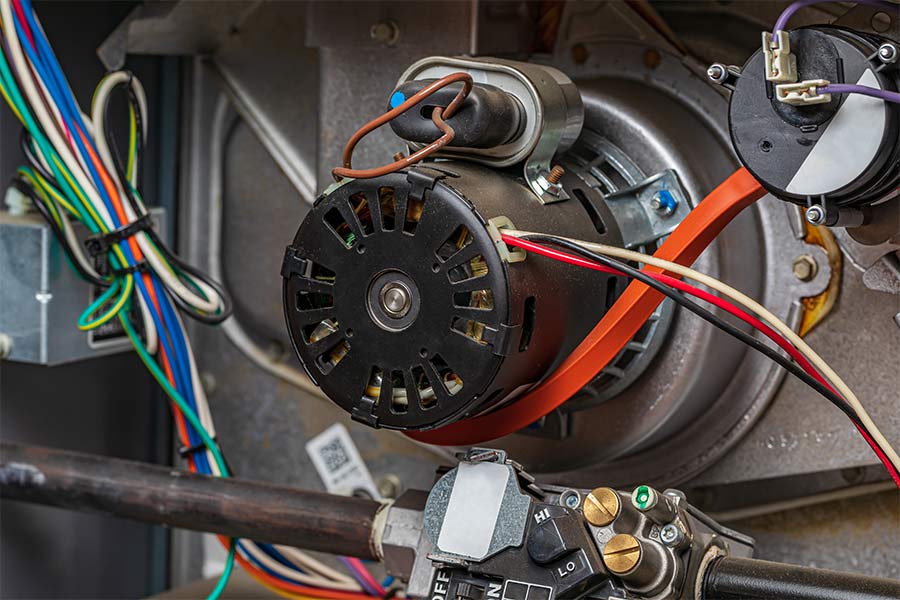Keeping your furnace in top shape doesn’t have to be overwhelming, but it does require a routine. Have you checked your air filters lately? Regularly swapping them out every 1-3 months can significantly improve airflow and quality. Maintaining a clean and clutter-free area around your furnace guarantees that nothing obstructs its function. You might wonder about the moving parts and their maintenance or whether your thermostat could use an upgrade. What other steps should you take to make sure your system runs smoothly? Let’s explore how to keep your furnace efficient and reliable. Let’s explore how furnace maintenance can keep your furnace efficient and reliable.
Change Air Filters Regularly
Changing the air filters regularly is essential for maintaining ideal furnace performance and ensuring efficient airflow throughout your home. You should check the filters monthly and replace them every 1-3 months, depending on your usage and the manufacturer’s recommendations. Dirty filters restrict airflow, making your furnace work harder, which can lead to increased energy consumption and higher utility bills. This simple maintenance task not only enhances air quality by trapping dust, pollen, and other contaminants but also prolongs the lifespan of your furnace. When selecting a replacement filter, consider the MERV rating that aligns with your home’s needs. A higher MERV rating means better filtration but could also restrict airflow if your system isn’t designed for it. Prioritize regular filter changes to optimize efficiency.
Inspect the Thermostat
Regularly inspecting your thermostat guarantees accurate temperature readings and ideal furnace operation. Begin by confirming the thermostat is level and securely mounted on the wall. Look for loose wires or corroded connections disrupting communication with the furnace. Verify that the thermostat is set to the appropriate mode (heat) and that the desired temperature aligns with your comfort needs. Check the battery life; low batteries can lead to inaccurate readings. If your thermostat is programmable, review and update the schedule to confirm it meets current usage patterns. Consider calibrating it by comparing its reading with a separate thermometer. This meticulous attention confirms that your thermostat effectively manages your home’s climate, leading to efficient and reliable furnace performance.
Clean the Furnace Area
To guarantee ideal furnace performance, start by clearing away any clutter around the furnace to maintain proper airflow and reduce fire hazards. Ensure that flammable materials, boxes, and other obstructions are at least three feet from the unit. This clearance prevents overheating and promotes safety. Next, inspect the floor for dust and debris accumulation, using a vacuum with a hose attachment to remove any particles that could affect efficiency. Pay special attention to the air intake vent, ensuring it’s free from obstructions. Regularly check for signs of moisture or leaks around the furnace base, as these could indicate other issues. Whether you’re maintaining an existing system or preparing for a new furnace installation, keeping the surrounding area clean is essential. By maintaining a clean furnace area, you’re optimizing performance and extending the system’s longevity, ultimately serving those who rely on it.
Check the Blower Motor Function
Evaluating the blower motor function is essential for confirming your furnace operates efficiently, as this component circulates air throughout your home. First, inspect the motor’s housing for dust buildup or debris impeding airflow. Clean it using a soft brush or vacuum. Next, listen for any unusual sounds like grinding or rattling, as these indicate potential issues with the motor bearings or alignment. Confirm the blower wheel spins freely by manually turning it; resistance could signal obstructions or damage. Check all electrical connections for tightness and signs of wear. Additionally, lubricate the motor bearings if your model requires it, as this reduces friction and prolongs lifespan. Regular maintenance helps guarantee your home remains comfortable and your system serves effectively.
Test Safety Controls
When maintaining your furnace, verify the safety controls are functioning correctly to prevent hazards and ascertain efficient operation. Regularly testing these controls guarantees your system operates safely, minimizing risks to your home and family. Start by inspecting the flame sensor, which detects the presence of a flame and shuts down the gas valve if necessary. Next, assess the limit switch, an essential component that prevents overheating by turning the furnace off if temperatures exceed safe levels. Finally, the pressure switch is evaluated, which confirms proper airflow through the venting system.
- Inspect the flame sensor: Clean it to avoid false readings.
- Assess the limit switch: Test it to confirm it cuts power at high temperatures.
- Evaluate the pressure switch: Verify it detects adequate airflow.
Examine Vents and Ductwork
After guaranteeing the safety controls are in peak condition, focus on examining the vents and ductwork to maintain efficient airflow and system performance. Begin by inspecting all visible sections of ductwork for any signs of damage, such as cracks or disconnections, which could impede airflow. Use a flashlight to examine joints closely and bend where debris accumulates. Ensure all vent registers are clear of obstructions like furniture or drapes, facilitating unobstructed air circulation. Pay attention to any unusual noises or vibrations, which could indicate blockages or leaks. If you identify dust buildup, consider vacuuming or hiring a professional for a thorough cleaning. In cases where damage is found, duct repair may be necessary to restore proper airflow and system performance. Remember, well-maintained ducts enhance energy efficiency, prolong system life, and improve indoor air quality for those you serve.
Lubricate Moving Parts
To guarantee smooth operation and prevent wear, apply lubricant to all moving parts of your furnace, focusing especially on the blower motor and fan bearings. Proper lubrication minimizes friction, enhancing efficiency and prolonging your system’s life. Follow these guidelines to guarantee a professional approach:
- Select the proper lubricant: Use a high-quality, non-detergent oil for furnace components to avoid residue buildup.
- Apply sparingly: Over-lubrication can attract dust and debris, leading to clogs and reduced effectiveness. A few drops usually suffice.
- Consult the manual: Each furnace model may have unique requirements. Always refer to the manufacturer’s instructions for specific lubrication points and frequency.
Following these steps guarantees your furnace runs smoothly, allowing you to serve better those relying on its warmth.
Monitor Pilot Light or Ignition
Ensuring your furnace’s pilot light or ignition system functions correctly is essential for maintaining safe and efficient operation. Begin by visually inspecting the pilot light. It should burn a steady blue flame; a yellow or flickering flame may indicate a problem with the gas mixture or airflow. Listen for a distinct clicking sound when the furnace starts for electronic ignitions. If ignition fails, check for obstructions or dust accumulation around the ignitor, which can impede performance. Regularly clean the pilot assembly and ignition components, as buildup can cause inefficiencies or malfunctions. If you encounter persistent issues, such as the pilot light frequently going out or ignition delays, consider addressing them promptly to prevent disruption in heating service, thereby maximizing comfort for those you serve.
Schedule Professional Inspections
While actively maintaining the pilot light or ignition system, it’s equally important to schedule regular professional inspections to confirm your furnace operates at peak efficiency and safety. A certified technician can identify potential issues before they escalate, ensuring your system is reliable and efficient. Inspections typically cover:
- Heat Exchanger Examination: Professionals check for cracks or leaks that could lead to carbon monoxide exposure, a serious safety risk.
- Electrical Component Assessment: Technicians verify all wiring and connections are secure, preventing potential malfunctions or hazards.
- Airflow and Ventilation Verification: Proper airflow is essential for efficient operation; experts will inspect ductwork and vents for obstructions.
Upgrade to a Programmable Thermostat
Consider upgrading to a programmable thermostat, which allows you to automatically set and adjust your home’s heating schedule for enhanced energy efficiency and comfort. This device empowers you to create a heating plan tailored to your household’s routine, ensuring warmth when needed and conserving energy when you’re away. Maintaining consistent temperatures reduces the strain on your furnace, extending its lifespan and optimizing performance.
Installation is straightforward and typically involves replacing your existing thermostat. Once installed, you can program settings for different times of the day to align with your preferences. Choose a model compatible with your HVAC system for seamless integration. By adopting this technology, you’ll improve your home’s comfort and efficiency and contribute positively to environmental sustainability.
Conclusion
By tending to your furnace regularly, you ensure it operates in tip-top shape, keeping your home cozy. Swap those air filters, tidy up the surroundings, and give moving parts a little TLC. Don’t forget to check the thermostat and safety controls for peace of mind. With a bit of attention and the occasional expert check-up from a trusted HVAC company, your furnace will be ready to handle the chilly days ahead with ease.

